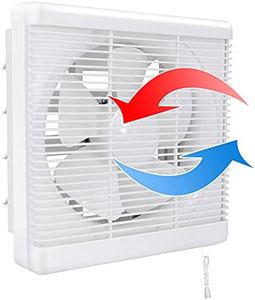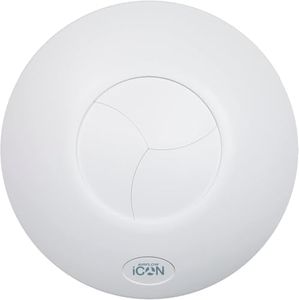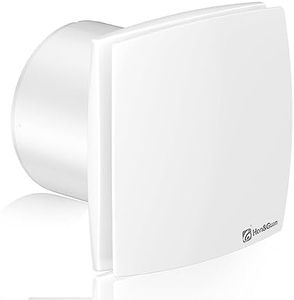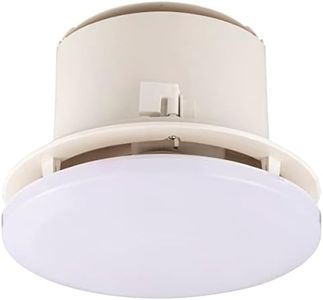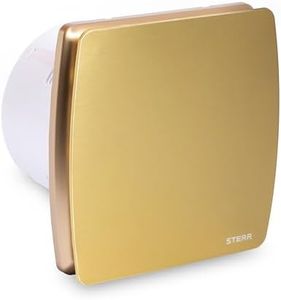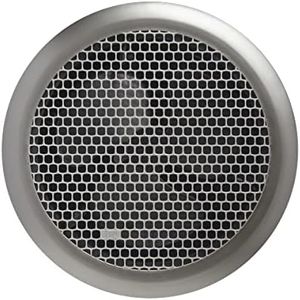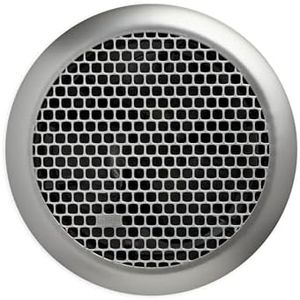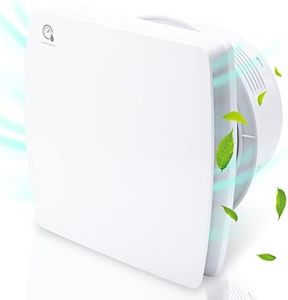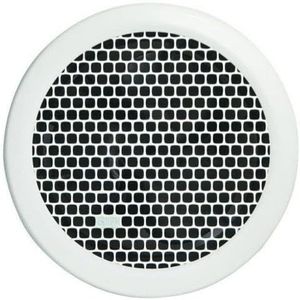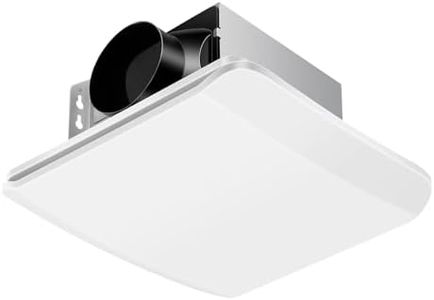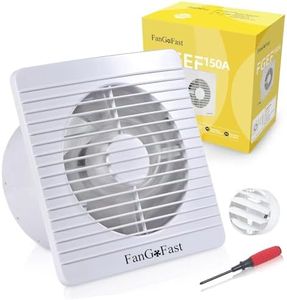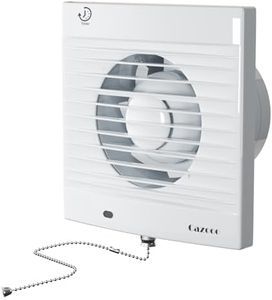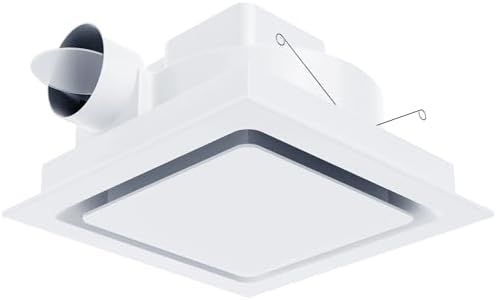We Use CookiesWe use cookies to enhance the security, performance,
functionality and for analytical and promotional activities. By continuing to browse this site you
are agreeing to our privacy policy
10 Best Quiet Bathroom Fans
From leading brands and best sellers available on the web.Buying Guide for the Best Quiet Bathroom Fans
Choosing a quiet bathroom fan can greatly improve your comfort by reducing noise while effectively removing humidity and odors. When picking the best fit, you want a fan that balances quiet operation with efficient performance. Understanding a few key specifications will help you select a fan that meets your needs and ensures a more pleasant bathroom environment.Noise Level (Sones)Noise level is measured in sones, which tells you how loud the fan will be when it’s running. Lower sone ratings mean quieter fans, while higher numbers indicate more noise. Sones typically range from about 0.3 (very quiet, similar to a library) to 4.0 (fairly loud, like a normal conversation). Think about when and how you'll use the fan: if you enjoy a peaceful, spa-like bathroom experience, look for fans with a sone rating of 1.5 or below; if noise is less of a concern, you can go higher. Choosing the right rating will help ensure your bathroom stays relaxing while the fan is running.
Airflow (CFM)Airflow, measured in cubic feet per minute (CFM), indicates how much air the fan can move. This is important because it determines how effectively the fan can remove moisture and odors from your bathroom. Bathroom size guides what CFM you need: a small bathroom (up to 50 square feet) typically requires a fan with 50–70 CFM, medium spaces (51–100 square feet) usually need 70–100 CFM, and larger bathrooms may need higher than 100 CFM. Consider your bathroom’s size and whether it has features like a separate shower room or high ceilings—larger, more complex spaces need higher CFM for good ventilation.
Energy EfficiencyEnergy efficiency refers to how much electricity the fan uses to do its work. Choosing an energy-efficient model not only saves power and lowers utility bills but can also mean quieter operation, since efficient motors tend to create less noise. Energy efficiency is usually marked by labels or lower watt usage. If environmental impact or long-term costs matter to you, prioritize energy efficiency, but make sure it still meets your noise and airflow needs.
Installation TypeInstallation type describes whether the fan is mounted on the ceiling, wall, or in-line (within ductwork). Your bathroom’s layout, ceiling height, and existing venting will guide this choice. Ceiling-mounted fans work best in typical bathrooms with overhead access, while wall-mounted fans may suit small spaces or bathrooms with no attic above. In-line fans can be installed further from the bathroom for ultra-quiet operation. Think about your existing bathroom structure and discuss options if you’re unsure which mounting type fits best.
Additional FeaturesAdditional features can include built-in lights, humidity or motion sensors, timers, and heaters. These extras can improve convenience and comfort, but may affect noise and installation complexity. For example, a fan with a light is great if you need extra bathroom illumination, while a humidity sensor can turn the fan on automatically when moisture levels rise. Reflect on your habits—do you want automatic features? Would extra lighting be helpful? Let your needs guide which extras, if any, are worth seeking out.
